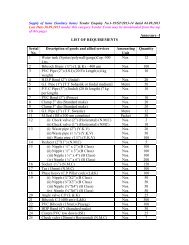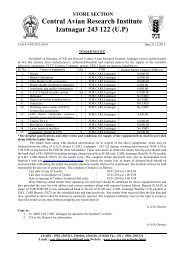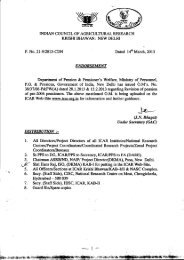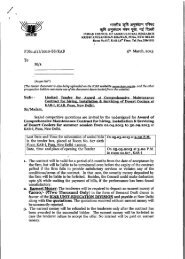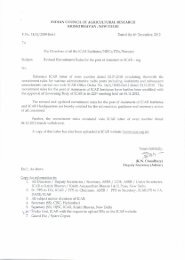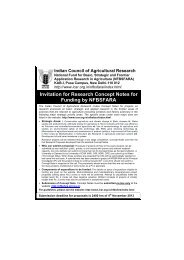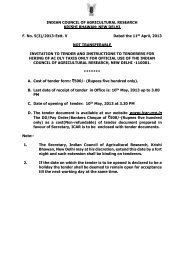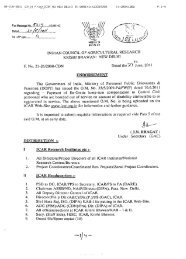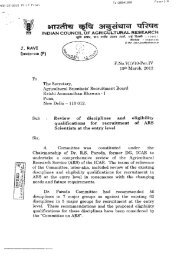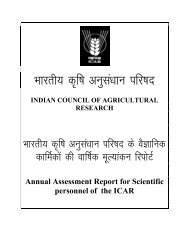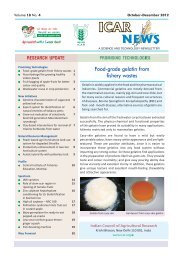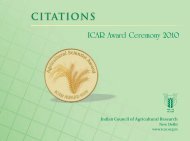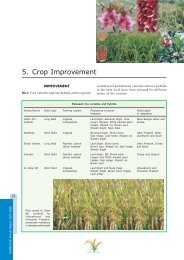agronomy agricultural physics agricultural meteorology soil science
agronomy agricultural physics agricultural meteorology soil science
agronomy agricultural physics agricultural meteorology soil science
Create successful ePaper yourself
Turn your PDF publications into a flip-book with our unique Google optimized e-Paper software.
Rashevsky, N. 1960. Mathematical Bio<strong>physics</strong>, Physico-Mathematical Foundations<br />
of Biology, Vol.2, Dover Publications, New York.<br />
4. Fundamentals of agro<strong>meteorology</strong> and climatology<br />
Sun and earth; seasons; solar radiation and laws of radiation; heat balance of the<br />
earth and atmosphere; <strong>meteorology</strong> and climatology; instruments for measurement<br />
of meteorological elements; optical phenomena in the atmosphere, agromet observatory;<br />
variation of pressure and temperature with height; vapour pressure; psychrometric<br />
equation; saturation deficit; potential temperature; pressure gradient; cyclonic and<br />
anticyclonic motions; clouds and their classification; origin and accumulation of electrostatic<br />
charges on clouds, thunder lightening precipitation processess; artificial rain<br />
making; thunderstorm and dust storm, hail, mist, fog and dew; local wind system;<br />
land and sea breeze circulation; mountain and valley winds; weather charts; forecasting<br />
methods-short, medium and long range forecasting techniques, numerical weather<br />
prediction; El Nino and southern oscillations. Atmospheric pollution and its effect<br />
on climate.<br />
Weather and climate; seasonal distribution of climatological elements over latitudes;<br />
climatic classification: Koppen and Thornthwaite systems; types of climate: humid<br />
and dry climates; climatic change and global warming; agroclimatic indices;<br />
agroclimatic zones; different agroecological zones for India; physical climate, climatology<br />
of India: monsoons, rainfall variability; atmospheric and <strong>soil</strong> drought; arid<br />
and semi-arid regions; frequencies of disastrous weather events in different regions;<br />
climatological factors and their effects on crop pests and diseases, crop growth and<br />
yield.<br />
Practical<br />
Agromet observatory-different classes of observatories(A,B,C). Site selection and<br />
installation procedures for meteorological instruments; measurements of weather<br />
parameters, their reading and recordings; calculation of daily, weekly, monthly means/<br />
totals of weather data climatic normals; weather chart preparation and identification<br />
of low pressure systems and ridges.<br />
Suggested Readings<br />
Byers, H.R. 1959. General Meteorology, McGraw Hill Inc, New York<br />
Chang Jen Hu, 1968. Climate and Agriculture, Aldine Publishing Co, Chicago.<br />
Gates, D.M. 1968. Energy Exchange in Biosphere, UNESCO, Paris.<br />
Ghadekar, S.R, 1991. Meteorology, Agromet Publishers, Nagpur.<br />
Haurwitz, B. and Austin, J.M., 1944, Climatology, McGraw Hill Inc.,New York, pp<br />
410.



